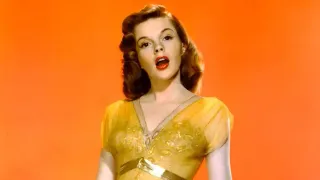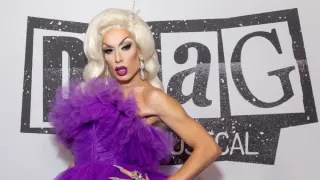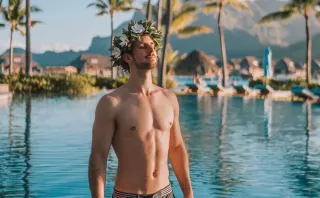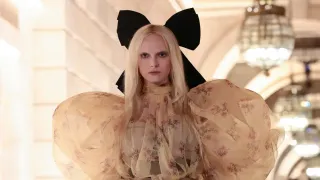July 3, 2016
Way Out West!
Sura Wood READ TIME: 4 MIN.
The American West is mighty popular territory for curators this summer, judging from the number of exhibitions plumbing the terrain at area museums. Some will find the prospect of this much California/West-centric artwork a cause to rejoice; others will feel compelled to catch the first flight to Manhattan.
"California and The West," at SFMOMA's new Pritzker Center for Photography, is one of four such shows. Featuring local luminaries such as Carleton Watkins, Edward Weston, Tina Modotti, Ansel Adams, Minor White and Dorothea Lange, among many others, it charts the evolution of the Golden State's landscape, from 1856 to 2014, and the myriad ways photographers have documented it and transformed wilderness spectacle into art.
"California: The Art of Water," focusing on artists' portrayals of the physical beauty and human harnessing of a precious natural resource, opens in mid-July at the Cantor Arts Center at Stanford. The latest entry, Wild West: Plains to the Pacific, at the Legion of Honor, explores themes of mining, agriculture and other forms of land use from the mid-19th century onward, the morphing mythology of the American West, notions of manifest destiny, and issues of cultural and national identity, with an emphasis on California, especially the north and San Francisco.
If the thesis of Wild West sounds overly broad, that's no accident; it's a construct designed to mine the FAMSF's extensive permanent collection and the 100,000 works on paper from the archive of the unjustly underappreciated Achenbach Foundation for Graphic Arts. Organized into categories examining cowboy stereotypes, the National Parks (note an early watercolor by a 22-year-old David Park), the wages of progress and other topics, the show's true raison d'etre is the unearthing and display of 175 paintings, photographs and prints that would otherwise remain in storage or out of the spotlight. The best approach is to cherry pick. While this may not be the most consequential of exhibitions, there's plenty to choose from, with an eclectic roster of artists, such as Albert Bierstadt, Maynard Dixon, Robert Adams, Richard Bechtle, David Hockney, Wayne Thiebaud, and Ed Ruscha, whose western imagery forms the backbone of Ed Ruscha and the Great American West, a complementary show coming up at the de Young next month.
Dating from the Gold Rush, the works in Wild West are sometimes juxtaposed, not particularly successfully, with contemporary ones. But who can quibble with the idyllic-bordering-on-biblical portrait of a lush green Sacramento River Valley in the German-born painter Albert Bierstadt's bucolic landscape "California Spring" (1875), where billowing storm clouds part to allow rays of sunlight to shine down on majestic oaks and grazing cows? An apparent advertisement for settlement, painted in the artist's studio, it leaves out the blast furnace heat, the region's propensity for flooding and drought, or that it was once home to Native Americans forced to scatter to the hinterlands. The painting hangs next to Emmi Whitehorse's crayon color wash "Nature Makes a Leap V" (1993), an abstraction seen through a purplish-gray haze that meditates on the Navajo philosophy of nature and harmony. If there's a conversation or connection between this landscape and the Bierstadt, it's a tenuous one.
On an adjacent wall, a quartet of tall, lonely transplants, abandoned near a dusty freeway off-ramp in Dixon, endure their ignominious fate, lining the front of a tacky strip mall in San Francisco photorealist painter Richard Bechtle's "Four Palm Trees" (1969). In a different section, Bechtle's emotive lithograph "Hoover Man (Man with Vacuum Cleaner)" (1966) depicts the seedy, downtrodden underside of Norman Rockwell's America. The poignant image, inspired by the artist's father, who fell on hard times during the Depression, shows a weary, shabby older cowboy in a doorway, peddling a modern convenience. The ride-em cowboy of pop-culture fantasy was alive and well, though, in Frederic Remington's "The Bronco Buster." The first cowboy equestrian sculpture, the 1895 bronze of a rider, one arm punching the air, thighs gripping the flanks of a horse rearing back on its hind legs, is positively kinetic. Fritz Scholder's portrait "Blind Medicine Man" (1974) is a stirring counterpoint. Worlds away in tone and era, it's both a contemporary deconstruction of a traditional subject and a subtle yet powerful indictment of the disparity between the reality of Native American lives and white myth. Scholder was a descendant of the Luiseno tribe of Southern California.
But for my money, a day with a work by Wayne Thiebaud is better than a day without, and there are two here: "Ponds and Streams (2001), a colorful acrylic in which he turns a rural California agriculture grid into a vibrant abstract composition; and an etching where he does his magic with a precipitous "Freeway Curve" (1975). One is slain by nostalgia glimpsing the less congested San Francisco of Arthur Tress' black & white photographs of people on horseback, riding along the breakers at a deserted Ocean Beach in 1964; and in Joachim Ferdinand Richardt's romantic oil painting "Golden Gate Moonlight" (1875), where moon glow reflects on a bay opening to the Pacific before a splendid bridge came to define it.
Through Sept. 11. Info: legionofhonor.famsf.org







